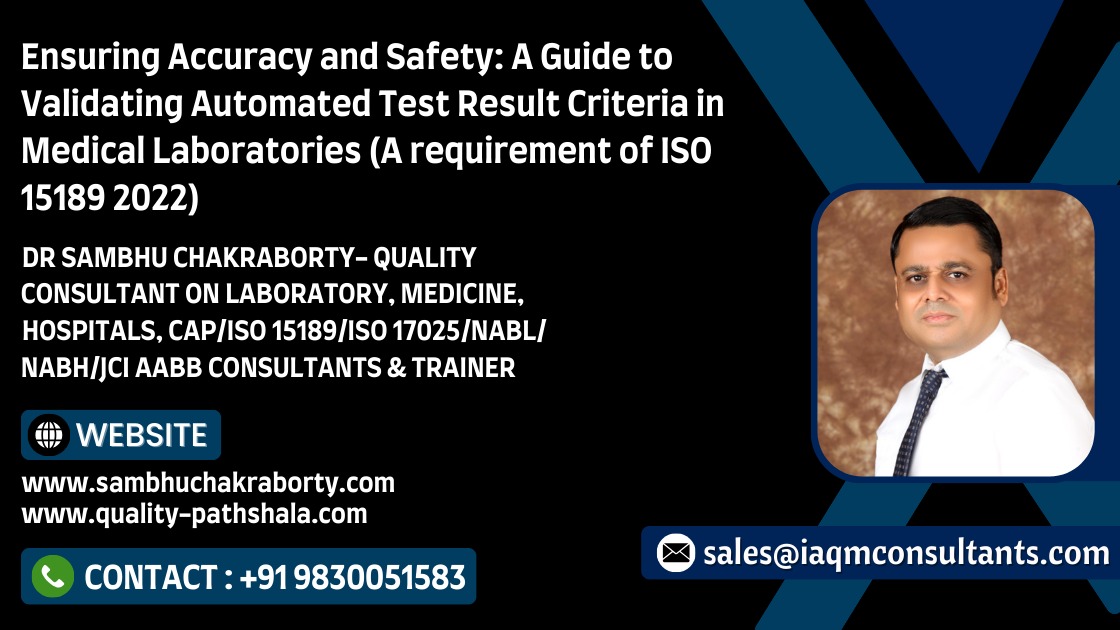Automated selection criteria for test results in a medical testing laboratory are pivotal for ensuring accuracy, efficiency, and safety in patient care. To write an article on this, it’s essential to consider several key points.
Introduction
The advent of automation in medical testing has revolutionized the process of test result handling. It offers the promise of faster turnaround times, reduced human error, and streamlined operations. However, the implementation of such systems requires rigorous validation and oversight to prevent any compromise in patient care.
Criteria Validation and Approval
Before an automated system is put to use, it must undergo a comprehensive validation process. This involves setting precise parameters for which results are to be automatically released and which require manual review. The criteria must be robust enough to handle a variety of test outcomes, including borderline and critical results.
Regular Review and Verification
Post-validation, these criteria must not remain static. Regular reviews should be scheduled to evaluate their effectiveness and reliability. This becomes even more crucial after any update to the reporting system that might affect the established criteria.
Risk Management
Change management processes should be in place to minimize the risk associated with updates or modifications to the automated system. Any changes should be tracked, and their impact on the selection criteria should be assessed before implementation.
Conclusion
Automated selection criteria serve as the backbone of modern medical laboratories. Their correct functioning is not just a matter of regulatory compliance but also a cornerstone of quality patient care. Establishing a sound procedure for the validation, review, and verification of these criteria is an essential step that all medical laboratories must undertake to maintain the integrity of their operations and the safety of their patients.
By addressing these points, you can form a comprehensive article that addresses the critical aspects of automated selection criteria in medical testing laboratories.Top of Form
Bottom of Form
Creating validation criteria for automated systems in a medical testing laboratory involves ensuring that all aspects of the system function as intended and do not compromise patient care. Below is an example of how such criteria might be documented, using a hypothetical automated system for reporting blood glucose levels.
Document: Validation Criteria for Automated Blood Glucose Reporting System
1. Accuracy Validation:
- Criteria: The automated system must accurately report blood glucose levels within a clinically acceptable range compared to manual verification.
- Hypothetical Example: A batch of 100 known glucose samples will be processed through the automated system. The reported results will be compared to manually verified results from a certified reference method. The system must achieve a 95% concordance with the reference method, with a margin of error within ±5 mg/dL for glucose levels.
2. Precision Validation:
- Criteria: The system must consistently produce the same results for repeated tests on the same sample under the same conditions.
- Hypothetical Example: A single blood sample with a known glucose level will be tested 20 times in succession. The coefficient of variation (CV) for these repeated tests must be below 5%.
3. Report Release Validation:
- Criteria: Automated release of results must only occur if all internal quality control checks are passed.
- Hypothetical Example: The system must confirm that internal quality controls are within the established range before releasing any patient results. If a control result is out of range, the system must flag the batch and prevent result release.
4. Change Verification:
- Criteria: Any changes to the system’s software or reporting algorithms must be followed by a revalidation to ensure accuracy is maintained.
- Hypothetical Example: Following an update to the system’s software, a new batch of 50 known samples will be processed. The results must be compared to a certified reference method as described in the accuracy validation criteria to ensure no drift in accuracy.
5. Alert Function Validation:
- Criteria: The system must correctly identify and alert for results that are outside of the physiological range.
- Hypothetical Example: The system shall be tested with samples that have glucose levels significantly outside the normal range (e.g., <40 mg/dL or >400 mg/dL). It must trigger an alert for 100% of such cases without fail.
6. User Authentication and Data Integrity Validation:
- Criteria: The system must correctly identify authorized users and ensure data integrity from input to report generation.
- Hypothetical Example: Authorized users must be able to log in and process samples without errors. Unauthorized access attempts must be logged and denied. A data trail from sample entry to report generation must be verifiable and without discrepancies.
Approval and Review:
- All validation criteria must be approved by the laboratory director before implementation.
- Criteria will be reviewed annually or after any system changes, whichever comes first.
The above document outlines the criteria for validating an automated system for blood glucose level reporting, providing examples for how each criterion can be tested. This framework can be adapted to fit different automated reporting systems within a medical laboratory setting.

Sir do you have any reference for test verification and method validation